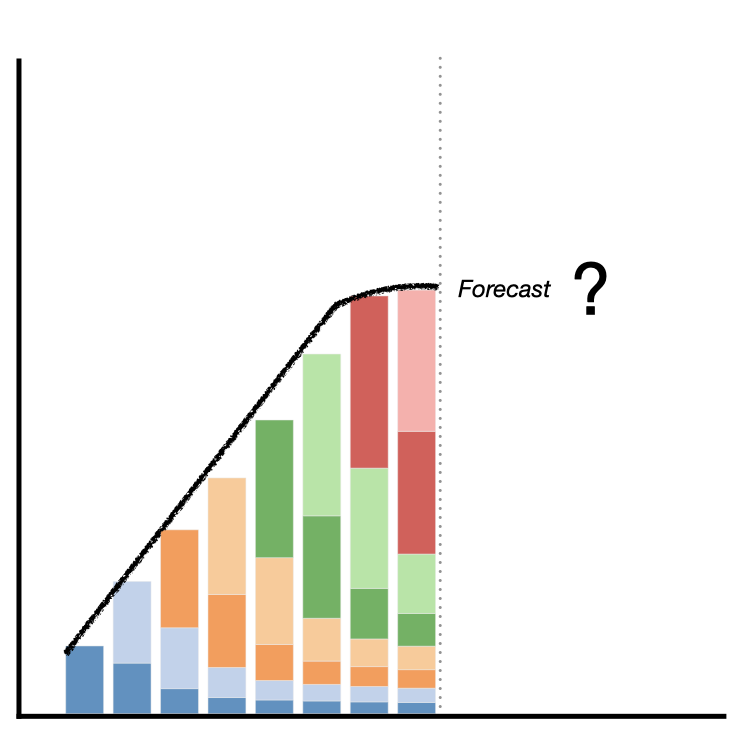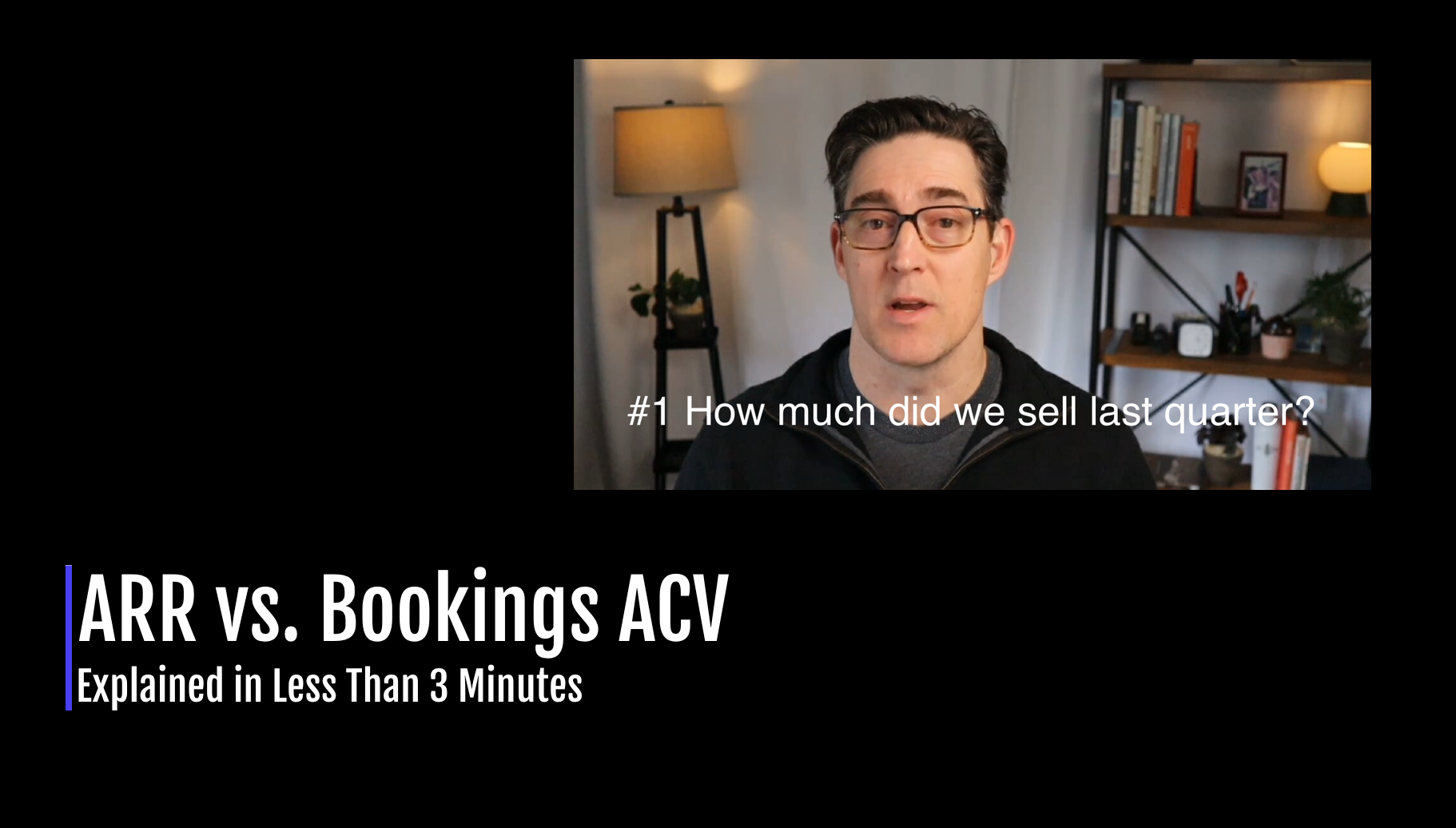
Defining Annual Recurring Revenue (ARR) is essential for SaaS companies, but those with usage-based pricing face challenges in determining whether to include variable revenue. Analyzing 14 publicly traded SaaS companies revealed three common approaches: simple annualization, a hybrid model combining contracts and usage, and excluding usage-based revenue for predictability. Choosing the right method depends on growth patterns, investor expectations, and revenue stability, ensuring that ARR accurately reflects business performance.
Read More →
How to calculate Gross Revenue Retention (GRR) and Net Revenue Retention (NRR) and understand the difference between the two metrics.
Read More →
Whether you are preparing a cohort analysis or interpreting data presented to you, here are some good questions to ask.
Read More →
The cohort table is a critical visualization of customer retention. Whether you are a board member or operating executive, it's worth understanding the structure of these charts and how to interpret the data.
Read More →
The top 20% of a company's customers can generate 50% to 80% of a company's revenue. How can we identify these customers? What sets them apart from lower-value customers? And, is it possible to identify them in advance?
Read More →
When it comes to customer revenue, does the 80/20 Rule hold? Do 20% of customers really generate 80% of revenue? This article addresses the question by examining the Pareto Principle and demonstrating visualization techniques to help uncover how much revenue top customers generate.
Read More →
Early in my career, I was working in a finance role at an e-commerce company. I had the following discussion with the head of customer acquisition. Me: What's up with all the new customers from partner X (a bargain website)? Customer Acquisition: Yeah, we're getting a lot of traction there. That paid marketing program is important for us to hit our new-to-file customer acquisition targets. Me: Discounts for those customers seem pretty high. [concerned look on my face]
Read More →
Creating a revenue forecast using historical customer cohort data involves analyzing the behaviors and revenue patterns of different groups of customers acquired during specific periods. This approach helps in understanding how long-term value and revenue streams emerge from various customer segments over time. This article describes the steps to follow when creating a cohort-based revenue forecast.
Read More →
I see the following situation all too often with clients. Things go great for a while. The company grows rapidly, principally through new customer acquisition. However, new customer growth slows down and fewer new customers are acquired each month. As a result, sales flatten out. The company believes that revenue is stable and with some minor changes, growth can be restarted. However, the customer cohorts tell a different story.
Read More →
The role of the VP of Analytics typically involves a blend of leadership, business acumen, and technical expertise Whether the role is performed by a VP of Analytics (or as part-time responsibility of finance, marketing, engineering, or IT), the following are the primary responsibilities of an the analytics function within an organization.
Read More →
Hiring a fractional Vice President of analytics can be a strategic decision for companies at various stages of growth and development. Whether it's due to budget constraints, a need for specialized expertise, or the challenges of scaling and transitioning, a fractional head of analytics offers a flexible, cost-effective solution. By bringing in an experienced professional on a part-time basis, companies can leverage advanced analytics insights to make informed strategic decisions, fill skill gaps, and navigate complex data challenges without the long-term financial commitment of a full-time executive.
Read More →
Customer cohort analysis is a method used in marketing, finance, and analytics to group customers into "cohorts" based on shared characteristics or experiences within a defined time frame. I have encountered many situations where a cohort-based forecasting model proves superior to traditional approaches. This article outlines situations in which a cohort model is most effective.
Read More →
The article evaluates the financial worth of improving prediction models, using a subscription churn scenario. It discusses methods like confusion and cost-benefit matrices to assess a model's impact on revenue, comparing baseline and advanced models to highlight the potential significant returns from investing in more sophisticated predictive analytics.
Read More →
Whether you're grappling with budget constraints or seeking the most effective way to boost your business growth, this post breaks down the essentials of customer acquisition versus retention and upselling. Discover how time frame, customer lifetime value, acquisition costs, and more play a crucial role in shaping your approach. Read on to find out which strategy aligns best with your business's unique needs.
Read More →
Churn, the rate at which customers leave your service, can make or break a subscription model. Often, there's a tendency for businesses to become overly concerned with identifying every possible factor this is correlated with subscriber churn. However, my experience suggests that a model focusing on just three key factors can be highly effective in predicting subscription churn.
Read More →
Feeling the pain of spreadsheets for financial planning and looking for a software solution? The following is my list of must-have (and nice-to-have) features and capabilities.
Read More →
In this video, I'll explain the difference between Bookings ACV and ARR and how to use them to answer critical SaaS investor questions.
Read More →
When I need to present sales data with actual vs. target with data at the product and country level, I usually want to answer these questions (often in this order):

When measuring target versus actual sales, typically what people want to know is how does the actual compare to target in absolute and percentage terms?. Often a variance table works well for this. The format usually has columns in this order:
In terms of the …
Read More →
Check out my new video series on unit economics. It is based on a talk that received one of the highest feedback ratings at the Spero Ventures Founder Summit.
Read More →
Clearing up confusion about Customer Lifetime Value (CLV).
Read More →
I recently enjoyed reading the 1983 classic Adventures in the Screen Trade by William Goldman (1931-2018), who wrote many screenplays including Butch Cassidy and the Sundance Kid1. In the book, Goldman famously observed that when it comes to predicting the success of a movie, "nobody knows anything." I don't …
Read More →